Steepland harvesting in Northland
Tuesday, June 26, 2018, Dean Satchell's blog
Innovation always interests me. Some innovations become lost to time while others become the next step in evolution and lead to greater things. Often they are just a minor tweak to the existing art, a fine tuning exercise, while sometimes they are grand, a big step change, a complete rethink that is revolutionary. What I enjoy the most when I see innovation in action is experiencing that eureka moment where I think "wow, I wish I'd thought of that"!
Innovators also interest me. Innovators search for the best way of doing things. For Peter Davies-Colley that search is not out of self-interest, but for the collective interest of the forest industry. He is thinking about how we can harvest better, and putting his ideas into practice. Someone needs to lead the way because harvesting is the bit we as an industry don't always do well. Doing better means less damage to the adjacent conservation areas, it means less damage to the soil and it means less sediment entering our waterways.
Peter has been commercially harvesting small blocks for farm foresters in Northland for more than a decade and has developed a good understanding of the problems we face. The solutions he has been developing are innovative and exciting. The thing about harvesting on steeplands is that not only should it be managed to cause as little environmental damage as possible, but somehow it also needs to be done cost-efficiently... and usually on a small scale to boot.
Then there is the distance these small blocks are from the nearest road. They were usually planted out the back of the farm on the steep stuff no good for anything else. Peter has modified a four-wheel-drive fertiliser spreader to be a log "forwarder" that is able to use existing farm tracks to shift the harvested logs from the back of beyond out to the makeshift landing beside the road. This means the investment in roading is significantly reduced for the landowner. Maintenance and erosion issues are also minimised by not having to make great big roads for great big log trucks.
This off road log truck has a gross vehicle mass (GVM) of 18 tonnes, unladen (TARE) weight of 7 tonnes and therefore a max payload of 11 tonnes. Peter generally loads it to a range of 8-10 tonnes. One of the key advantages with this truck over the heavier 6 and 8 wheeler forwarders is that it needs less area to turn, it goes around tighter corners and fits on smaller narrower roads.
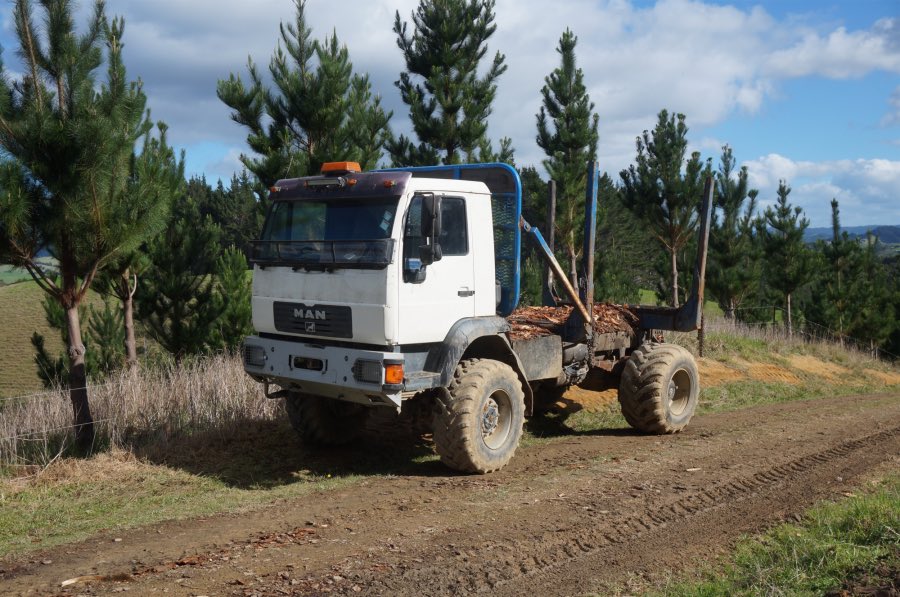
With a need for more off road log trucks in his own operation, Peter is building another two. They are easy to build now that he has developed the critical measurements.
Peters harvester started life as a 25 tonne machine, with a high and wide undercarriage. It now weighs in at 32 tonnes. The head is a Duxson felling head. Where this machine differs is that it has a winch mounted inside the body of the machine, capable of hauling 6 tonnes.
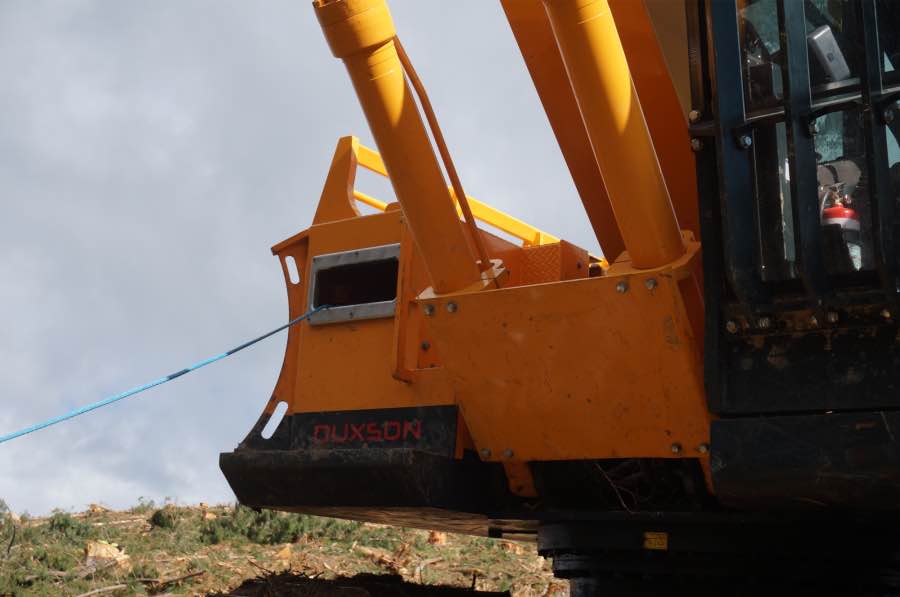
What is also interesting is that this winch uses a super-lightweight rope called dyneema, a 12 mm composite rope. This stuff is amazingly light and has a breaking strain of 17 tonnes.
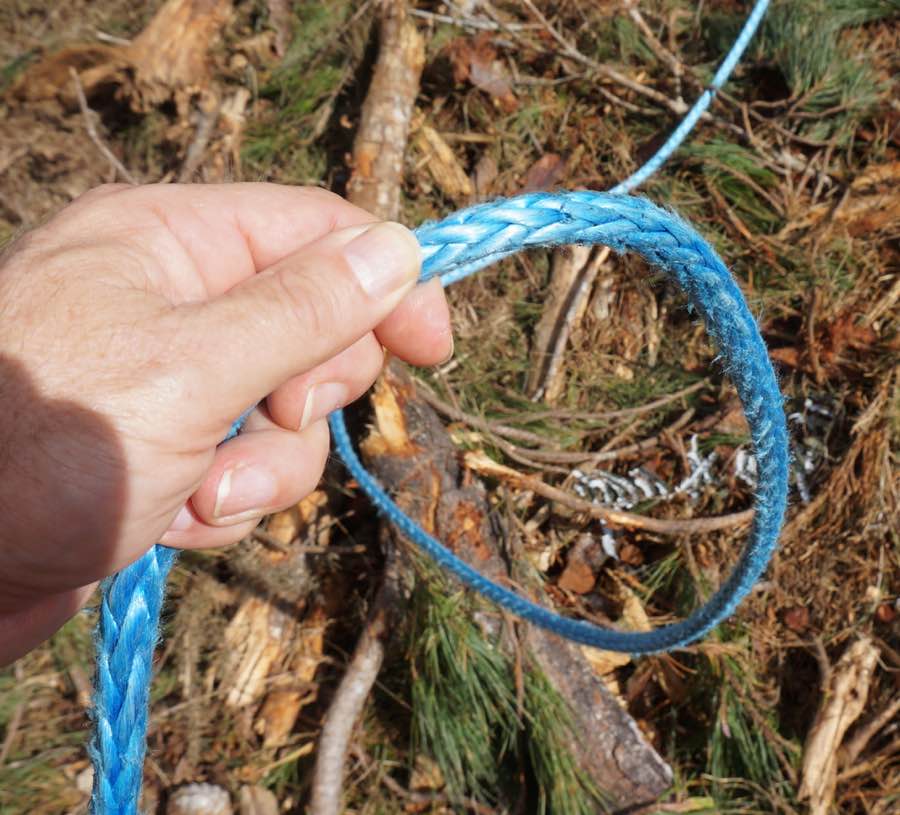
The winch rope is easily manhandled and even more easily repaired by splicing.
Most of the time this harvesting machine works as a standard feller buncher, harvesting trees and shovelling logs to the landing. But where the terrain gets too steep the machine walks down the slope as far as it can go. Trees below this are manually felled and then extracted with the winch, bunched and then shovelled up the one extraction track. A large area of trees can be extracted using one path, negating the need for cutting access tracks. Shovelling also causes much less soil damage than a skidder, because the logs are lifted and moved rather than dragged.
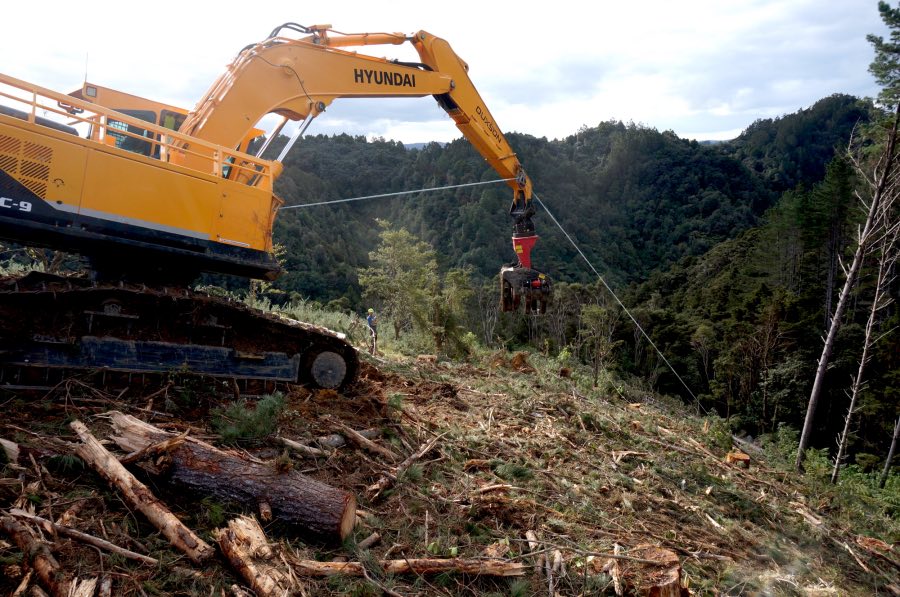
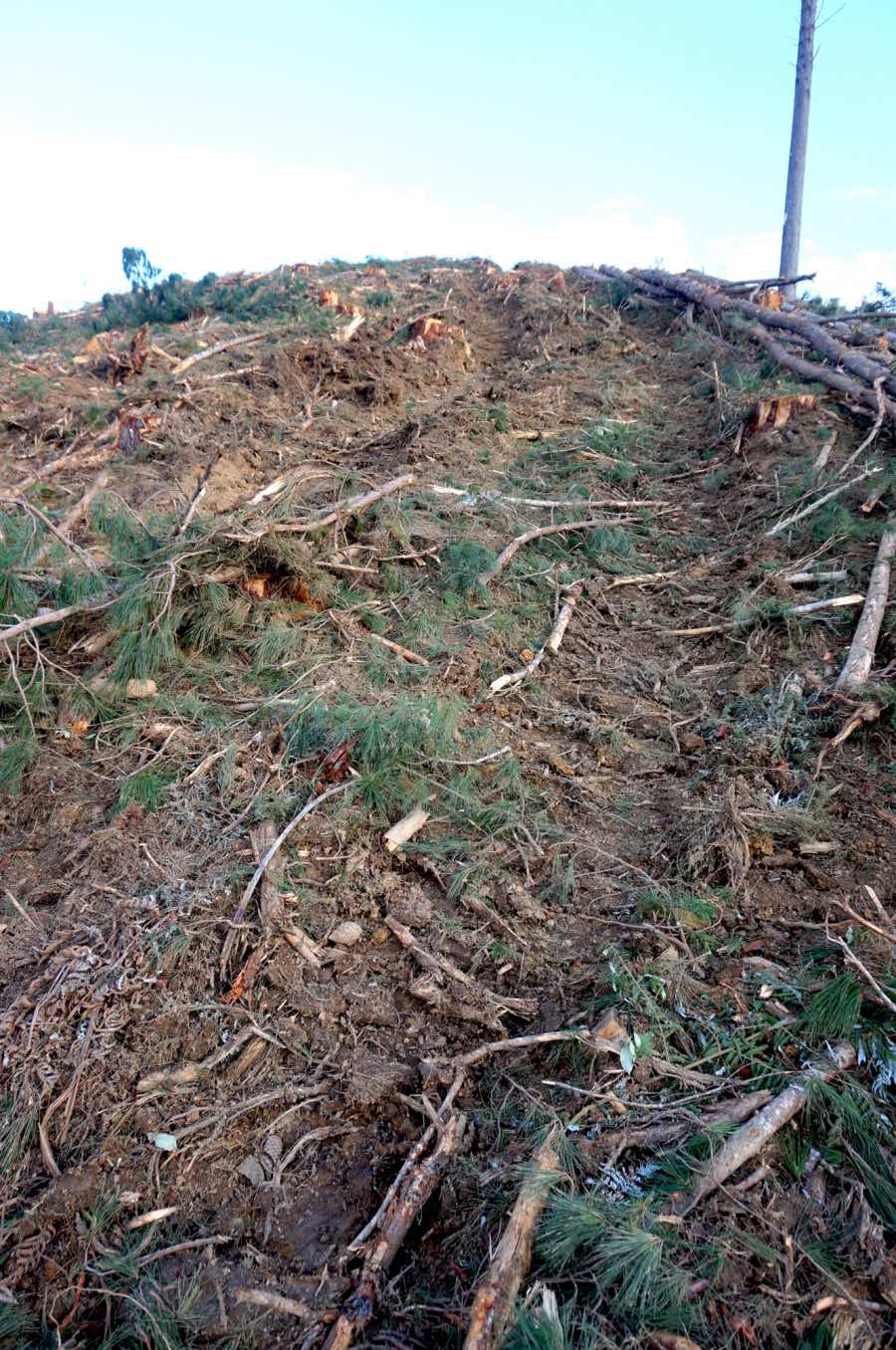
The winch is mostly used in small areas where the slope is too steep to get to with the machine. Productivity drops but Peter believes it is way more productive than other systems. The tradeoff seems to be about managing the right mix of equipment on each job for overall efficiency and with lowest environmental impact. In this case the stand adjoins an area of native bush with high environmental values, a QE2 open space covenant. The requirement was for no damage to the native bush, so the winch was used to directional fell these trees, then haul them up the slope to a central extraction path for shovelling to the track at the top of the slope.
Nice work Peter, looking forward to further developments!
Disclaimer: Personal views expressed in this blog are those of the writers and do not necessarily represent those of the NZ Farm Forestry Association.

 Farm Forestry New Zealand
Farm Forestry New Zealand
One post
Post from Vaughan Kearns on September 28, 2019 at 9:53AM
Simple and effective logging on steep terain.
I can see that by looking at the quality of the logs, that to spend money on bigger or more machinery would perhaps have resulted in little to nothing left for the grower.
Add a post